In its homeland in America it is called the “wheel of fire,” and in Russia it is called “sunny flower” or “variegated daisy.” His real name sounds beautiful and noble - gaillardia.
Photo of gaillardia in the garden
This flower began to be used in floriculture more than two centuries ago and to this day is considered a real find; it is unpretentious, hardy, easy to plant and care for, and responds with lush flowering to a minimum of care.
| Content:
|
However, some gardeners believe: “What my neighbor has is not interesting to me!” And your neighbor definitely has gaillardia. But don’t rush to consider this flower uninteresting!
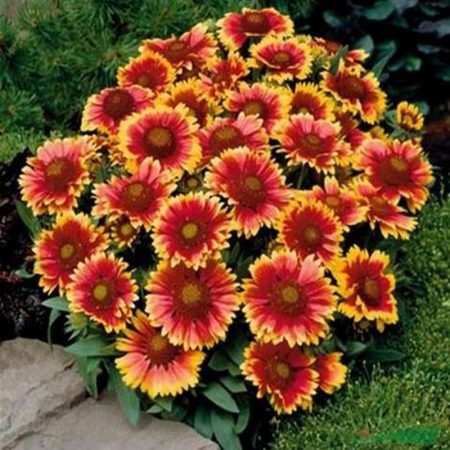
This is what gaillardia looks like.
Description of gaillardia
Gaillardia belongs to the Aster family, it is similar to daisies, sunflowers, gerberas, and zinnias... Initially, this herbaceous plant was an annual, but breeders bred several of its species as a perennial.
Gaillardia grows in the sunniest places, tolerates heat and winter cold well, is undemanding to watering and belongs to the favorite group of plants called “self-growing”.
Several years ago the flower was described as “a bush 60–80 cm high, with straight stems, blooming profusely from June to August with large yellow-orange or yellow-red flowers.”
Now the description has become much richer:
- miniature specimens up to 30 cm high appeared;
- the color range has expanded significantly: from apricot to raspberry tones;
- the size of the inflorescences and their fullness have increased: there are many varieties with semi-double and double flowers;
- The flowering period now for many representatives is from June until frost.
And this is without losing the main qualities - unpretentiousness, drought and frost resistance. Now you can choose a variety that your neighbor definitely doesn’t have!
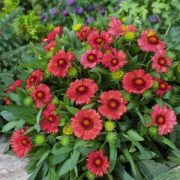 Unusual raspberry petals. |
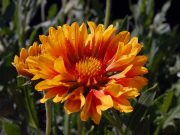 Semi-double gaillardia |
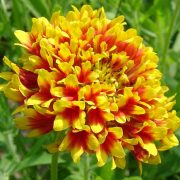 Luxurious terry specimen |
Growing gaillardia from seeds
The desire to grow gaillardia from your own seeds arises if you liked a certain color or quality of the mother plant. It must be said that not every gaillardia seed will repeat the desired characteristics, therefore the best and most reliable option is to purchase selection seeds from trusted manufacturers.
There are two ways to grow a “fire wheel” from seeds:
- Planting in containers at home. This needs to be done at the very beginning of March in order to plant the seedlings in the beds in May. In this case, gaillardia can bloom as early as June.
- Sowing seeds in open ground. This work is carried out in April. In August, the grown bushes are transplanted into flower beds, where they overwinter. Gaillardia will bloom next year.
You can also grow gaillardia by self-sowing if you are satisfied with the unpredictable qualities of the future bush.
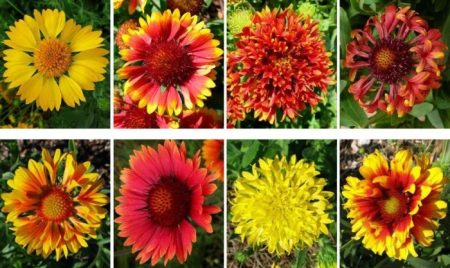
Colors for every taste.
Growing by sowing seeds in the ground
To sow seeds directly into the ground, you need to choose an area with well-drained soil; clayey and waterlogged soil will not produce strong plants.
- Seeds can be sown before winter. They are simply scattered around the area, lightly sprinkled with earth and covered with covering material. In the spring, when the seeds germinate, the material must be removed. During the summer, gaillardia will form rosettes.By autumn they need to be planted in permanent places. And next year it will be already formed young flowering bushes.
- Spring sowing is carried out in the same way, but without covering material. Make sure that the layer of soil with which you cover the seeds does not exceed 0.3 - 0.5 cm. Remember that this gaillardia easily reproduces by self-sowing, so you should not bury the seeds deep into the ground. In August, the grown plants need to be planted in beds. Before the onset of cold weather, they will have time to take root well.
Growing through seedlings
The most reliable way is to grow from seedlings at home or in a greenhouse.
- At home, use planting boxes or containers with light soil. The soil needs to be moistened, the seeds scattered over its surface, pressed lightly and the container covered with a transparent film on top. The coating must be periodically removed to remove condensation.
After 3–4 days, the roots sprout, go deeper into the soil, and then the cotyledons open. After this, the film can be removed. If the sown seeds are covered with soil, the cotyledons may open directly underground and will not germinate outward.
When 2 true leaves appear, the seedlings dive into cups with a volume of at least 200 ml, because they grow very quickly. You can plant them in the garden when consistently warm weather sets in, and immediately in permanent places.

Seeds germinate from the surface of the soil.
2.Gaillardia can also be grown in outdoor greenhouses. The sowing procedure is similar:
- moisten the soil,
- scatter the seeds
- press firmly to the surface,
- cover the top of the greenhouse with film.
The resulting seedlings can be picked or thinned out and grown in the same bed until the end of summer. In the second half of August, young rosettes need to be transplanted to prepared permanent places.
Planting gaillardia in open ground
When choosing an area in the open ground for planting, it is necessary to take into account that gaillardia can grow in one place for up to 4 – 5 years.
Gaillardia should be given the sunniest place and not be afraid that it will dry out. Even summer residents who come only on weekends and have the opportunity to water their seedlings 1-2 times a week successfully grow this unpretentious flower. On the contrary, in partial shade or high humidity, gaillardia does not bloom and grows stunted.
The flower is not picky about the soil, the main thing is that the soil is light and non-acidic. In the hole for the first planting you need to add a bucket of compost, 30 - 50 g of complex mineral fertilizers and a glass of wood ash. The mixture must be mixed well with the soil.
The holes are placed at a distance of 30 cm from each other. To make the bush grow more lush, you can plant 2 - 3 seedlings in one hole, but this depends on the variety.
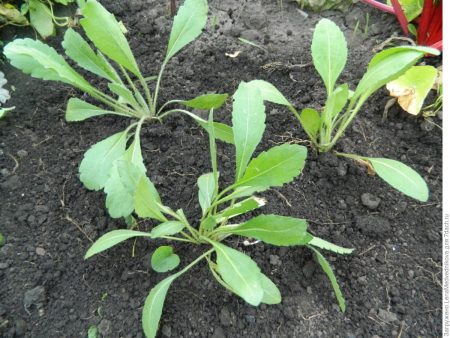
Transplanting.
Gaillardia care
The traditional set of measures for caring for gaillardia, to our joy, is very small:
- Watering is infrequent, but plentiful. During a long period of drought, it is worth increasing the number of waterings.
- Loosening is necessary after each watering. To prevent cracking of the soil and facilitate the delivery of oxygen to the roots.
- Feeding is carried out three times per season:
- during the period of bud formation,
- during flowering,
- in the fall, in order to prepare gaillardia for winter.
For feeding, humus and complex mineral fertilizers are used, depending on the phase of the plant’s life.
| Read more: the better feed perennials spring |
Please note! Gaillardia does not tolerate fresh manure; under no circumstances should it be used for feeding. You can only add humus.
- Tall specimens require garters to prevent heavy stems from falling apart in different directions.
- Removing dried flowers ensures abundant flowering and a well-groomed appearance.
- After the first flowering, it is better to prune the bush at the root. This technique increases the lifespan of the plant.
- Typically, gaillardia tolerates winter cold well, but young plantings need to be covered with foliage for the winter.
- Gaillardias need to be replanted every 4 to 5 years. This way they will remain decorative for a long time. Transplantation can be combined with propagation by dividing the bush.
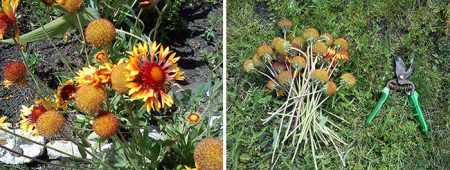
Trimming dry stems
Growing in flowerpots
Although gaillardia is considered a flower for open ground, it also grows well in flowerpots. For this purpose, low-growing varieties are used. Just one seedling is enough for a flowerpot to create a magnificent, lush and long-blooming bouquet.
Patio containers work too. Here it can be combined with hanging flowers or put together a bouquet of gaillardias of several varieties and colors.
Planting in containers is carried out in late April - early May.
Particular attention should be paid to drainage, since in a confined space there is a risk of excess moisture accumulation. The soil required is light, loose, non-acidic.
Caring for gaillardia in a flowerpot is even simpler:
- provide the plant with a sunny place,
- watering should be very moderate,
- fertilizing - at the same time as for gaillardias in the ground, but recalculating the volume of soil in the flowerpot.
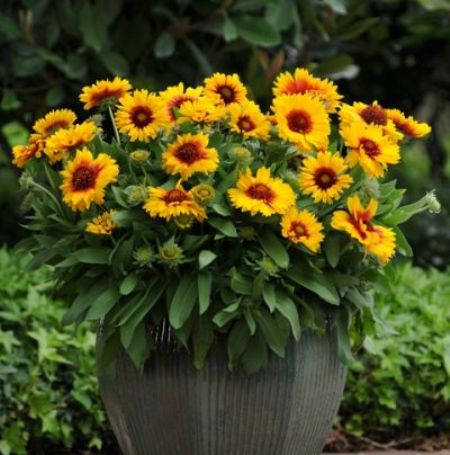
Reproduction by dividing the bush
In addition to the seed propagation method described above, gaillardia can also be propagated by dividing the bush. Usually this process is combined with transplantation.
The best time for this event is April.The plant has already awakened, the first shoots have emerged, and the size of the bush has become clearly visible. This is important to avoid damaging the roots when digging it up. Now you need to complete the following steps:
- Prepare holes for future plantings at intervals of at least 30 cm.
- Fill them with a mixture of humus or compost with wood ash and complex mineral fertilizers, dig well.
- Moisten the soil around abundantly.
- Dig up the bush completely.
- Using a sharp knife, divide the rhizome into large parts with several shoots. This is done so that the bush turns out strong, grows quickly and blooms in due time, i.e. in June.
- Water new plantings generously and loosen the soil after 2–3 days.
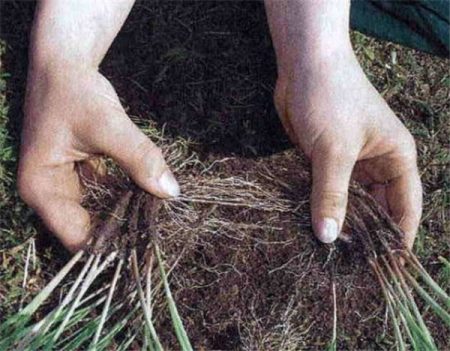
The more shoots, the better.
Further care for the transplanted gaillardia is exactly the same as described above.
You can reproduce by dividing the bush in the fall, but only at the very beginning of September. Young plantings must have time to take root and gain strength in order to survive the winter cold. Feeding them with potassium fertilizer and covering them with leaves will be a good help in this.
If autumn time is chosen, then before dividing you need to cut off all flower stalks from the bush. They have already fulfilled their function and without them it is easier to carry out all the manipulations.
Gaillardia in garden design
Tall gaillardias look great as a separate planting against the background of conifers and ornamental shrubs.
The combination of gaillardia with lupins is very beautiful, but the mixture with rudbeckia and echinacea is often confusing, because they look like twins, but together they form a colorful, cheerful composition.
| How to grow your own echinacea read here |
Borders and mixborders are everything for gaillardia.It will stand out everywhere with its luxurious and bright appearance, if only there was enough sun!
Low-growing gaillardias are no less charming. Even the stones on an alpine hill seem less gray if there is a variegated daisy bush nearby.
It is also convenient to place gaillardia in a flowerpot, which can be moved if necessary. Several of these mobile compositions will decorate a section of the garden, a patio, or a veranda... Wherever you place your gaillardia, it will enliven the space around it and create a sunny mood.
Diseases and pests
Gaillardia is rarely exposed to diseases, and it is also rarely attacked by pests, but still, when caring for the plant, it is necessary to inspect it taking into account these problems.
If you find aphids or whiteflies, you should not waste time; the insects are very aggressive and multiply quickly. Several insecticide treatments are necessary against them:
- Decis,
- Kinmiks,
- Akarin,
- Aktelik et al.
Diseases include rot, rust, powdery mildew, and spotting. The causative agents of diseases are various fungi, so fungicides will help here:
- Hom,
- Fundazol,
- Topaz,
- AbigaPik et al.
How to collect seeds
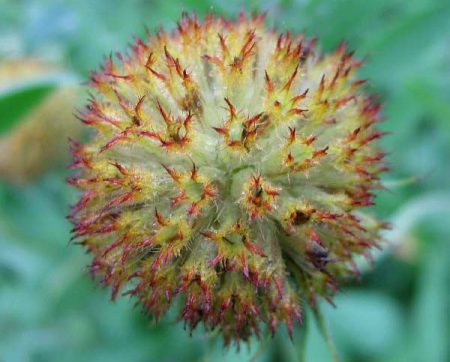
It is believed that the seedlings will turn out stronger if the seeds are left to winter on the bush. But winters can be quite harsh, therefore, to reduce the risk, it is better to collect some of the seeds in the fall, and some in the spring, and use both batches.
From the hardworking hands of modern breeders more and more new varieties of gaillardia of extraordinary beauty are emerging. No less hardworking gardeners are quite capable of taking up the baton and filling their gardens with these beautiful plants. And the sunny flower will certainly respond to careful care with all its colors, and country life will become brighter and more fun!
Types and varieties of gaillardia with photos and names
There are about 30 species of this plant. The most popular types among flower growers are:
- Beautiful (Gaillardia pulchella)
- Aristata (Gaillardia aristata)
- Hybrid (Gaillardia hybrida)
Beautiful (Gaillardia pulchella)
Beautiful gaillardia is a wild, annual plant that is widespread in the southeastern United States. The bushes grow spreading up to 60 cm high with flowers 6-7 cm in diameter. Flowering continues throughout the summer and reproduces by self-sowing.
The most famous and popular varieties of this species:
"Lorenz"
The variety "Lorenza" has spherical, double inflorescences arranged singly. Spreading bushes up to 60 centimeters high.
"Red Plume"
Red Plume is a medium-sized bush, up to 50 cm high; on straight shoots there are single inflorescences of an unusual burgundy color, up to 8 cm in diameter.
"Yellow Plume"
Gaillardia Yellow Plume is distinguished by large, spherical yellow inflorescences. The height of the bush is about 30 cm, the diameter of the inflorescences is 6-8 cm. It can be grown in pots and flowerpots.
Spinous (Gaillardia aristata) or grandiflora
Gaillardia spinosa is a tall perennial plant. The bushes are spreading, tall, and can grow up to 75 cm, so it is better to tie up the shoots. Flowering lasts from June to the end of August. The most famous varieties:
"Mandarin" 
Mandarin (Gaillardia Mandarin) - bush 60-70 cm in height.The inflorescences are lush, bright orange, 12 cm in diameter. Flowering from June until frost.
"Dazzer"
Dazzler A tall plant, thin but strong shoots reach a height of 70-75 cm. Up to 70 cm. The variety is demanding on watering and is frost-resistant. Can be used in group and single plantings.
"Goblin" 
"Goblin" is a tall perennial plant, shoot height 50-70 cm. Support is required. Flowering begins in late June-early July and continues until the first frost.
Hybrid (Gaillardia hybrida)
The species comes from Gaillardia beautiful, crossed with other varieties. There are double, semi-double and single flowers in a wide variety of colors. The height of the bushes varies from dwarf to tall.
Varieties of hybrid gaillardias:
"Primavera"
Primavera is ideal for growing in containers and boxes. On each compact bush, the height of which does not exceed 25 cm, 8–10 bright flowers bloom. Low-growing bushes are well suited for borders or paths.
"Arizona Sun"
Arizona Sun (Arizona Sun) grows up to 35-40 cm in height as a spherical bush. It blooms throughout the summer. The size of the flowers is quite large, about 9 cm, rich red in color with a yellow outline. Advantages: - blooms all summer - suitable for planting in containers and flower beds - easy to care for
Arizona Red
Arizona Red is suitable for decorating garden paths and flower beds. The height of the bush is 50-80 cm, the diameter of the inflorescences is 4-10 cm. This plant is distinguished by its unpretentiousness and long flowering time. Bright flowers in orange, red and yellow shades will delight you from June until frost.
"Mesa Yellow"
Gardeners appreciate Mesa Yellow for its long flowering period, during which your garden will be decorated with bright yellow large flowers that can be cut to create spectacular bouquets.This variety is used for decorating flower beds, decorating fences, and creating single and group plantings. Mesa Yellow gaillardia is highly drought tolerant.
"Mesa Red"
Gaillardia Mesa Red is valued by flower growers for its spectacular appearance and early flowering. An adult plant is a bush up to 40 centimeters high, on which large flowers with red petals and yellow-burgundy centers appear in early summer.
Other beautiful flowers:
- Planting and caring for aquilegia
- How to do it right plant and care for astilbes
- Growing anemones
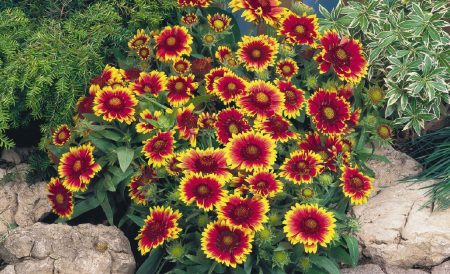
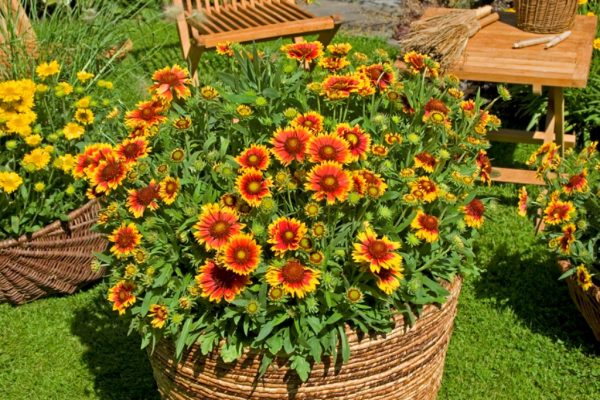
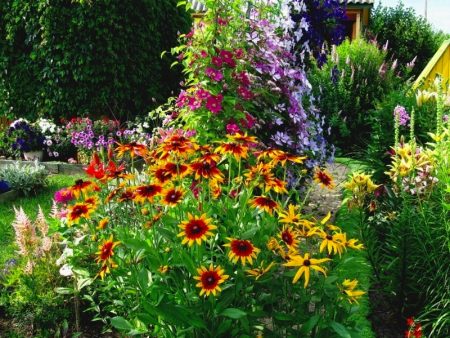
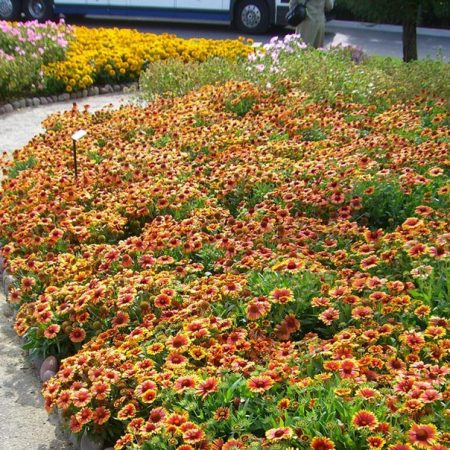
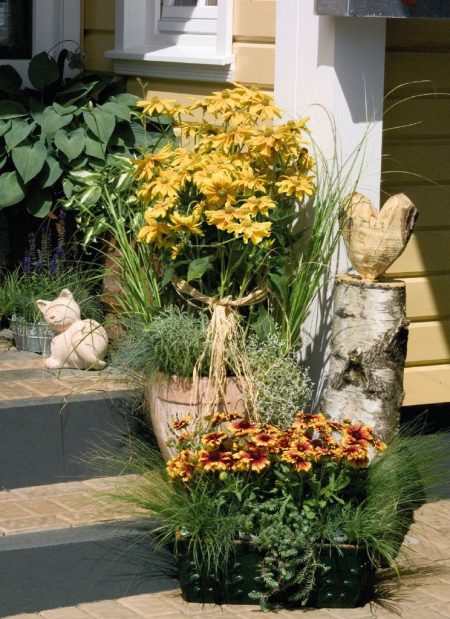
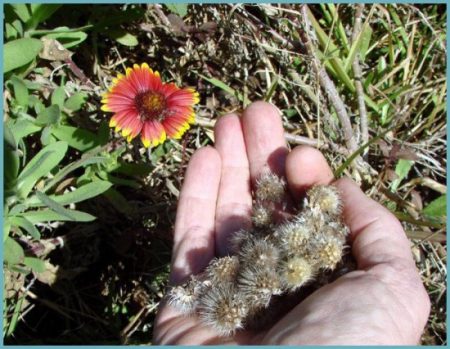
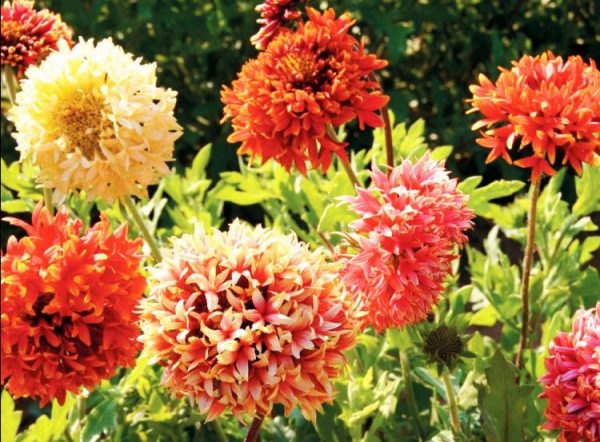
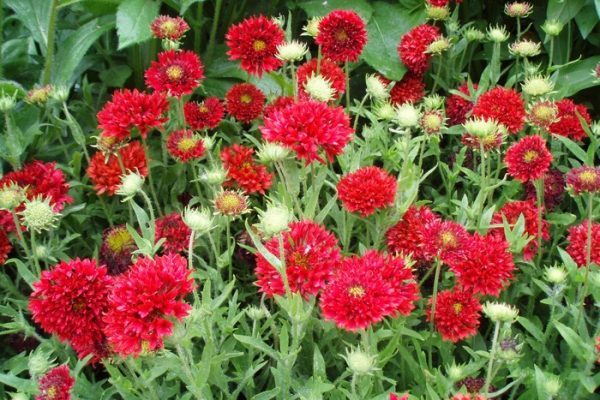
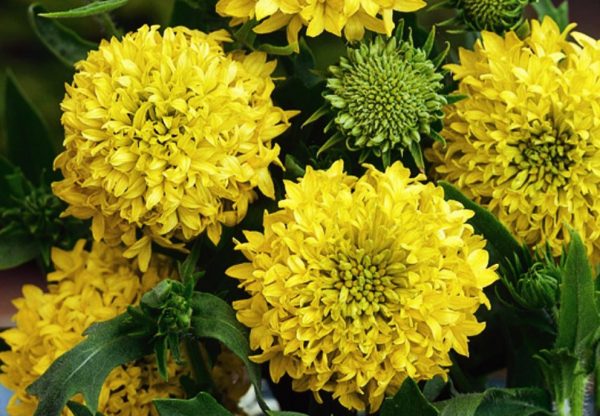
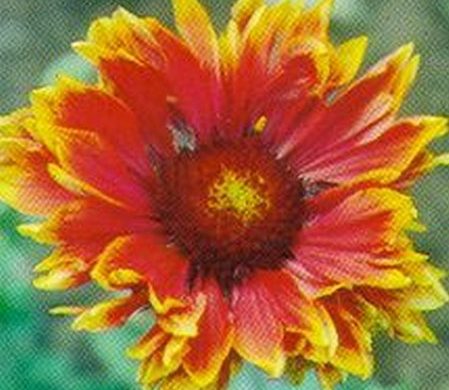
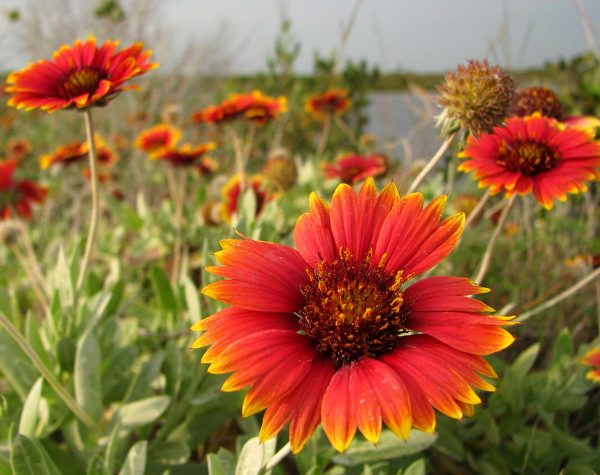
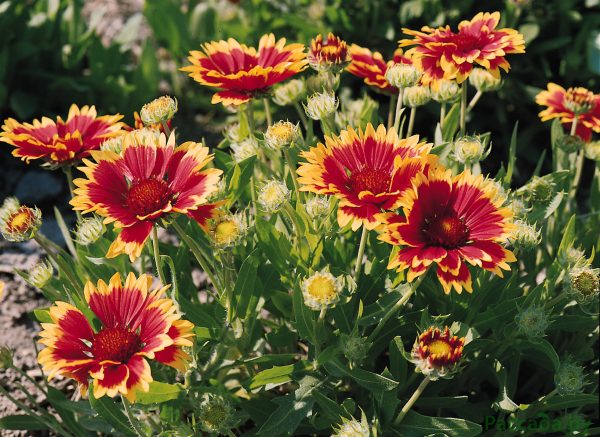
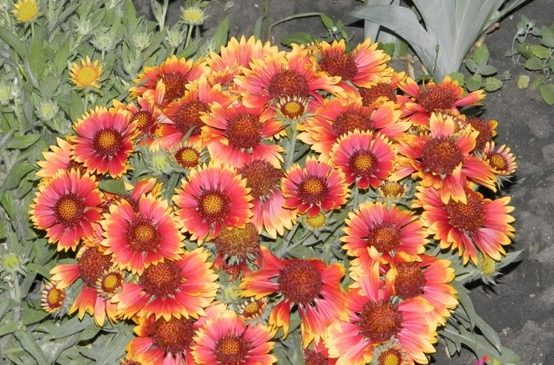
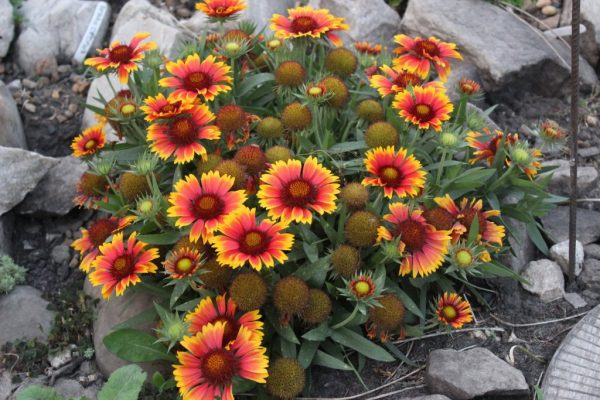
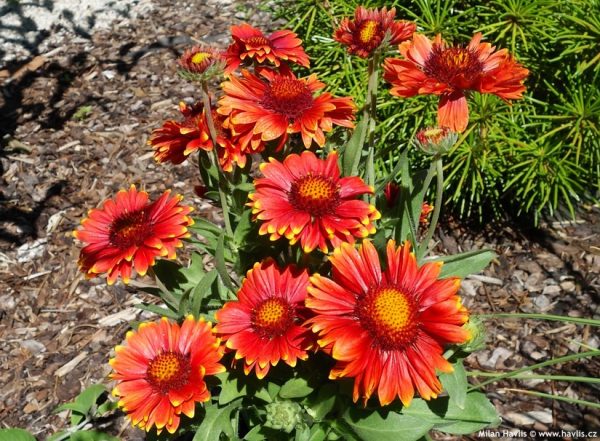
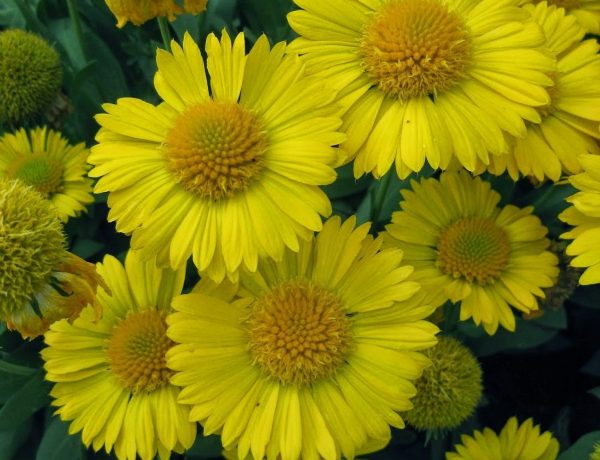
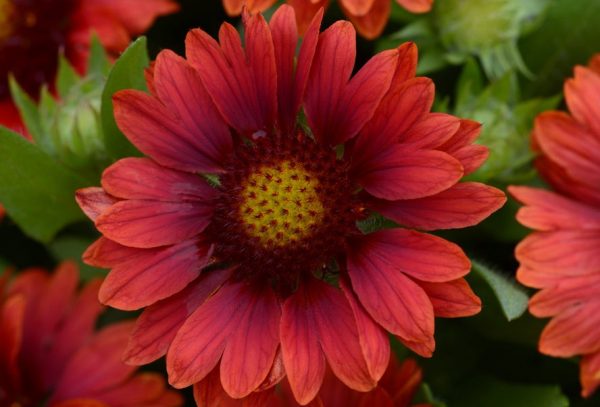

 CUCUMBERS NEVER GET SICK, I'VE BEEN USING ONLY THIS FOR 40 YEARS! I SHARE A SECRET WITH YOU, CUCUMBERS ARE LIKE THE PICTURE!
CUCUMBERS NEVER GET SICK, I'VE BEEN USING ONLY THIS FOR 40 YEARS! I SHARE A SECRET WITH YOU, CUCUMBERS ARE LIKE THE PICTURE! You can dig a bucket of potatoes from each bush. Do you think these are fairy tales? Watch the video
You can dig a bucket of potatoes from each bush. Do you think these are fairy tales? Watch the video
 How our fellow gardeners work in Korea. There is a lot to learn and just fun to watch.
How our fellow gardeners work in Korea. There is a lot to learn and just fun to watch. Eye trainer. The author claims that with daily viewing, vision is restored. They don't charge money for views.
Eye trainer. The author claims that with daily viewing, vision is restored. They don't charge money for views. A 3-ingredient cake recipe in 30 minutes is better than Napoleon. Simple and very tasty.
A 3-ingredient cake recipe in 30 minutes is better than Napoleon. Simple and very tasty. Therapeutic exercises for cervical osteochondrosis. A complete set of exercises.
Therapeutic exercises for cervical osteochondrosis. A complete set of exercises. Which indoor plants match your zodiac sign?
Which indoor plants match your zodiac sign? What about them? Excursion to German dachas.
What about them? Excursion to German dachas.
My epic with this flower began many years ago, from an ordinary yellow flower that flew in from nowhere, left it, and now given it to everyone. It has grown by self-seeding and occupies a lot of area. And it itself mutates into different colors from pure yellow to almost black. The multi-color palette is surprising. True, I don’t have terry.